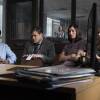We are so excited that everyone’s favorite magical mastermind, Jonathan Creek, is returning to WGBH this week. Creek designs magic tricks and illusions for a living, and uses those skills of deception to solve impossible crimes. Magic, crimes, and mystery – what more could you want?
Humans have long been fascinated by magic. Since ancient times, those accused of magic and sorcery had been deemed outcasts by society. Jonathan Creek may be fictional, but real-life magicians have become some of our most influential entertainers. So we couldn’t help but wonder: How did magic go from condemnation to celebration?
It turns out that the theatrical magic as we know it today began its move to the stage at the beginning of the 18th century. Prior to that, magicians and conjurers could be found on the street and in marketplaces, a habit of gypsies, street performers and buskers. Magic as a performance art was aided by the advent of machinery and electricity, when those forces were still a mystery to the general public. Fast forward through a few centuries, and magicians have captured the attention of people all over the world.
We’re taking you back in time to meet some of history’s most mystical magicians and explore what made them so successful.

Alexander Herrmann
Known for: Creating illusions on a grand scale
Active: Late 1800s
With both a father and older brother who made livings as magicians, French-born Alexander Herrmann had magic in his blood, and lived up to expectations by earning the moniker “Herrmann The Great.” Magic shows at the time were usually serious affairs cloaked in mystery, and Herrmann broke with this tradition by introducing humor and joy into his acts. His stage shows raised magic to a new form of artistry, creating grand illusions that mystified audiences. He deployed lavish stage decorations to distract audiences as well as cleverly constructed props that looked deceivingly simple. For his famous “Escape from Sing Sing” act, he used body doubles as well as an elaborately constructed prison set with hidden compartments to feign shooting an escaped convict. Herrmann became world famous, and eventually had audiences of world leaders such as Queen Isabella II of Spain, President Abraham Lincoln, President Ulysses S. Grant, and Sultan Abdul Aziz, ruler of the Ottoman Empire. After Herrmann’s death, his wife Adelaide performed for 25 more years – and became known as “The Queen of Magic."
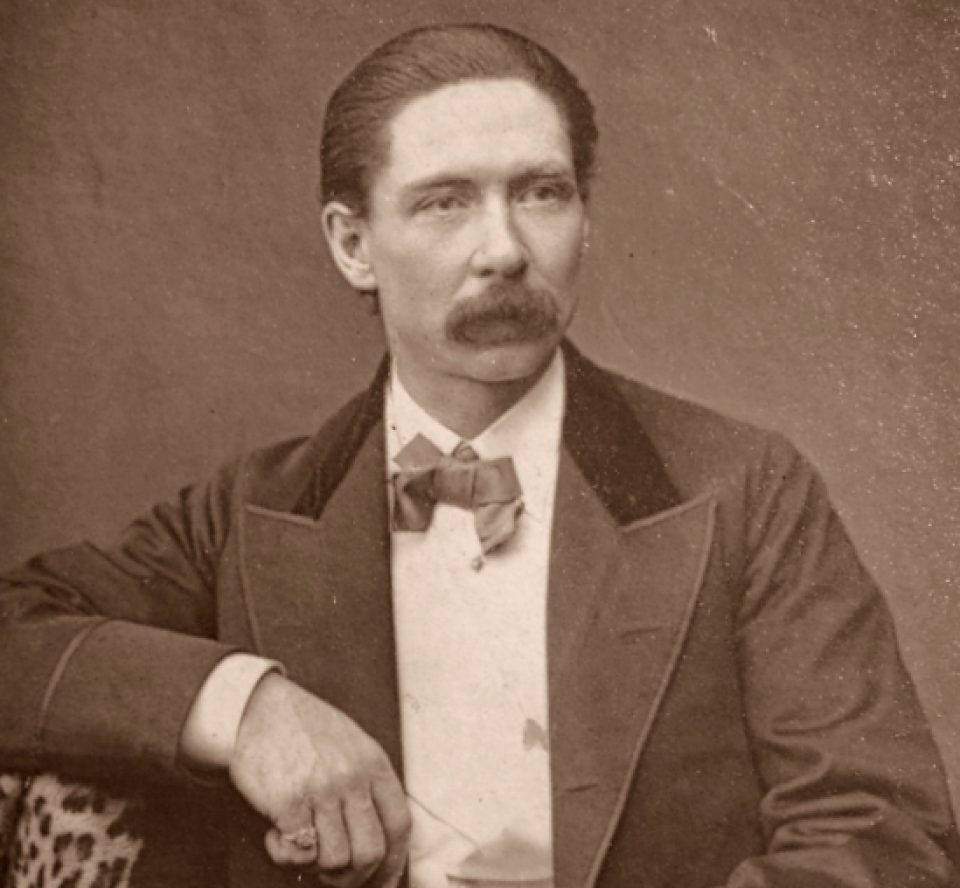
The Maskelyne Family
Known for: Invention; Using deception to aid wartime efforts
Active: Late 1800s to mid-1900s
Sometimes magic is a family affair, which was certainly the case with the Maskelyne family. It started with John Nevil Maskelyne, an inventor who is credited with developing the levitation trick. His son Nevil was also a magician, as was Nevil’s son Jasper. Like Jonathan Creek, Jasper Maskelyne allegedly used his own powers of deception for another purpose: tricking Nazis and helping the allied forces during World War II. Maskelyne and his “Magic Gang” allegedly used illusions to create fake tank and soldier movement, deceiving Nazi troops, and they were even able to conceal important allied targets. Jasper’s exploits will reportedly be the subject of a forthcoming movie starring Benedict Cumberbatch, an actor experienced playing another eccentric crime solver.
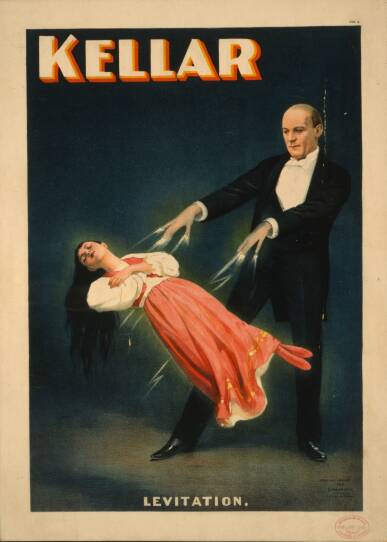
Harry Kellar
Known For: Levitation
Active: Late 1800s to early 1900s
Harry Kellar was considered the first great American magician, and Harry Houdini credited him with being a significant influence on his own performances. Like Jonathan Creek, the Pennsylvania-born Kellar started out as an assistant to magicians before going out on his own. As his fame rose, he became a rival to Alexander Herrmann. The key to his success was lavish presentation and an ability to misdirect an audience. One of his most well-known acts was "The Levitation of Princess Karnac" in which a girl floats up from a couch and Kellar passes a hoop over her to prove she is not suspended. The trick used a machine hidden by set decorations, while the girl rested on a flat board that could raise and lower her. Future magicians would repeat the trick for years to come.
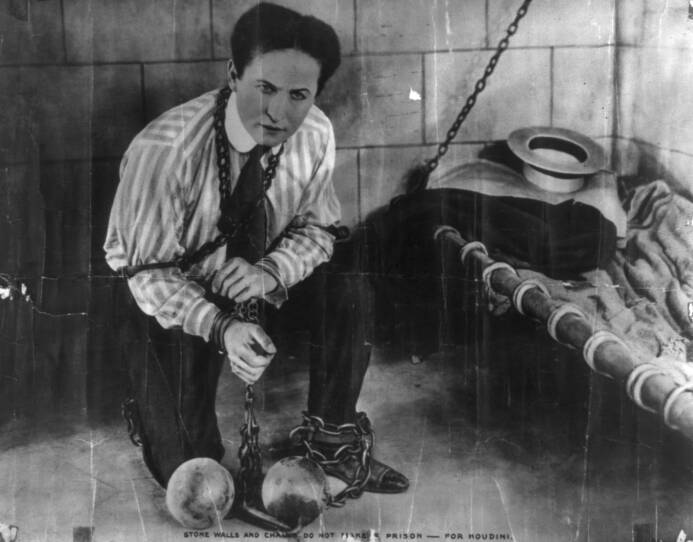
Harry Houdini
Known for: Escape acts
Active: Early 1900s
Probably the most famous magician on this list, Hungary-born Houdini was part magician and part entertainer, thrilling audiences all over the globe who traveled from far and wide to see the “Handcuff King” escape from impossible quandaries. What was the secret to his success? Spectators often noted Houdini’s powerful physique and flexibility. In addition, a locksmith who once knew him praised his “remarkable knowledge of locks and locking devices.” Houdini claimed to have “photographic eyes,” which allowed him to memorize all types of locks, ropes, and knots – and how they worked. He would put on other astonishing acts, escaping from straitjackets, knotted ropes, underwater packing boxes, and even a milk can. For anyone wishing to recreate his feats, he doled out some advice in his own 1910 book Handcuff Secrets: "You will notice that some of these tricks are very simple,” he wrote, “but remember it is not the trick that is to be considered, but the style and manner in which it is presented."
Learn more and watch American Experience: Harry Houdini's Impulse to Escape.
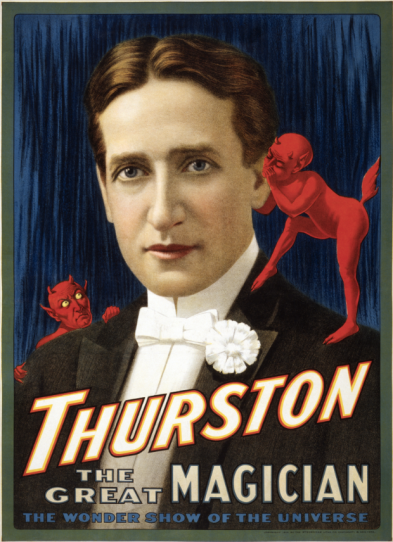
Howard Thurston
Known for: Traveling magic show
Active: Early 1900s
Howard Thurston dominated the American magic scene in the early 1900s, and became known as the “King of Cards.” He got his big break through card tricks, notably the "Rising Cards" trick, where he would conjure up an audience member’s chosen card and it would rise out of a glass goblet and into his hands. He would later perform grand illusions, including the famous Levitation of Princess Karnac, which had been invented by John Nevil Maskelyne and performed by Harry Kellar. Electricity was still a novelty in many homes, and his machinery aided to his mystery. He was also known for his ability to vanish many types of objects - groups of people, pianos, lions, tigers, and even automobiles. With the expansion of the railroad in the early 1900s, Thurston could take magic on the road. He developed a traveling magic show that became the largest American had ever seen.

Ricky Jay
Known for: Sleight-of-hand and card tricks
Active: Mid-1900s to early 2000s
Ricky Jay was a student of magic throughout his life, and began to perform on stage at the tender age of 7. He soon found his magical passion – card tricks – and dedicated his life to perfecting his craft. He is well known for his precision with cards throwing, known as scaling, which was introduced to magic acts by Alexander Herrmann and Howard Thurston. One of Jay’s signature acts was piercing watermelon with cards from across the stage. His magical expertise and his prowess at deception led him to consult on films such as Ocean’s Thirteen, The Illusionist, and The Prestige. As any magician does, Jay never revealed his secrets, but admits that comedy and entertainment were a big part of his appeal. “Most people realize that magical powers are not being invoked and that it’s someone who’s created a way to mystify and entertain you,” Jay told The New York Times in 2002. “The key to that is surprise. If you’re giving away the method, you’re denying someone the surprise.”
Learn more about Ricky Jay from American Masters: Deceptive Practice

David Copperfield
Known for: Elaborate televised stunts
Active: Late 1900s
Magic made another move in the 20th century - from the stage to our television screens. With an ability reach a whole new audience, magicians found new avenues for fame and glory, like David Copperfield, one of the most successful American entertainers in history. He became known for elaborate acts broadcasted live on TV, and was clearly influenced by his theatrical predecessors. His television tricks included surviving being thrown from Niagara Falls while chained, walking through the Great Wall of China, and escaping from Alcatraz. Perhaps most famously, he made the Statue of Liberty disappear on live television in 1983. It turns out that the in-person audience – and the cameras – were on a platform that rotated just gradually and slowly enough so that the statue became hidden behind one two pillars holding the large curtain. Thanks to some cleverly placed lights, the statue seemed to disappear. Copperfield also wanted to use magic for a different purpose: patriotism. He wanted to show "how precious liberty is and how easily it can be lost. I can show with magic how we take our freedom for granted,” he said.
Jonathan Creek airs on WGBX on Thursday, Apr. 11 at 9pm.
Sources:
9 of David Copperfield’s Most Memorable Illusions
American Experience: Harry Kellar
Escape Secrets: Harry Houdini
Gibson, Walter B (1966). The Master Magicians. Garden City, NY: Doubleday.
Howard Thurston, the Magician Who Disappeared
Price, David (1985). Magic: A Pictorial History of Conjurers in the Theater. New York: Cornwall Books.
The Most Famous Magician You've Never Heard Of




